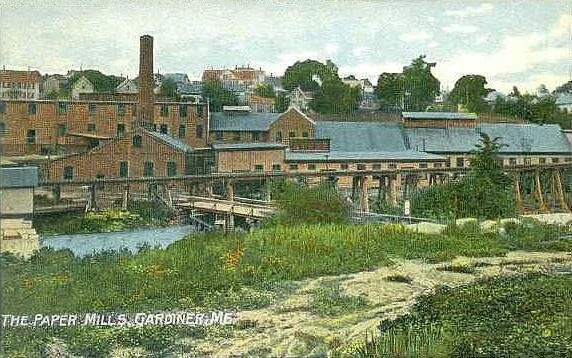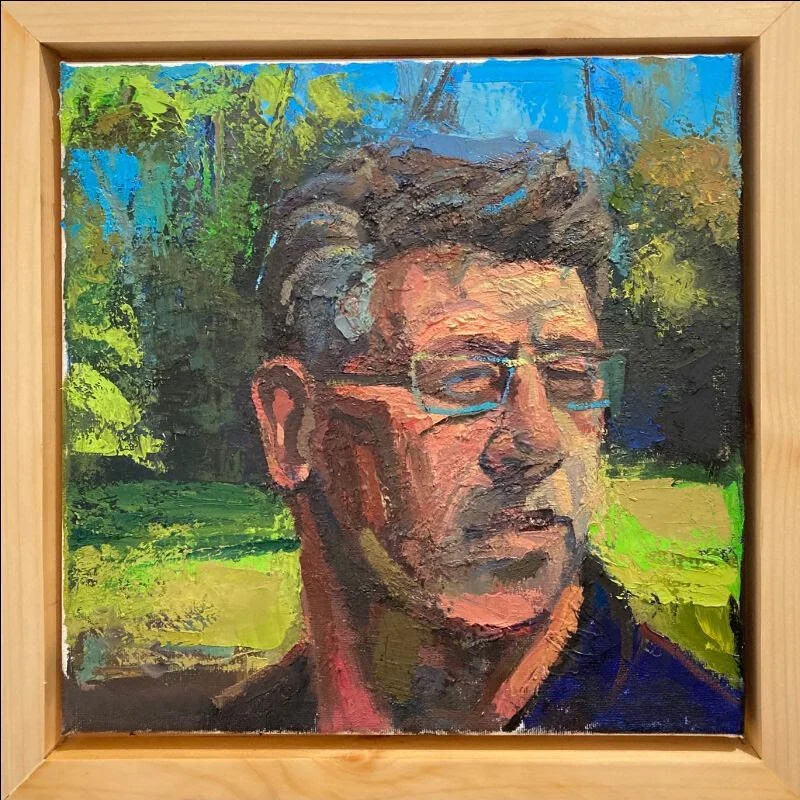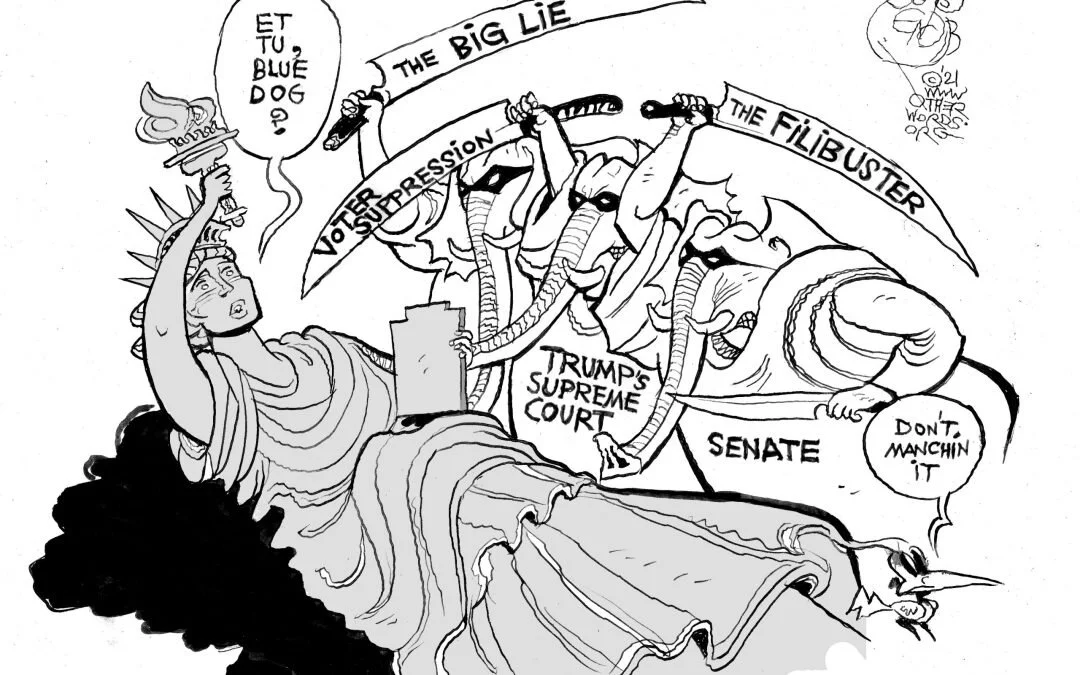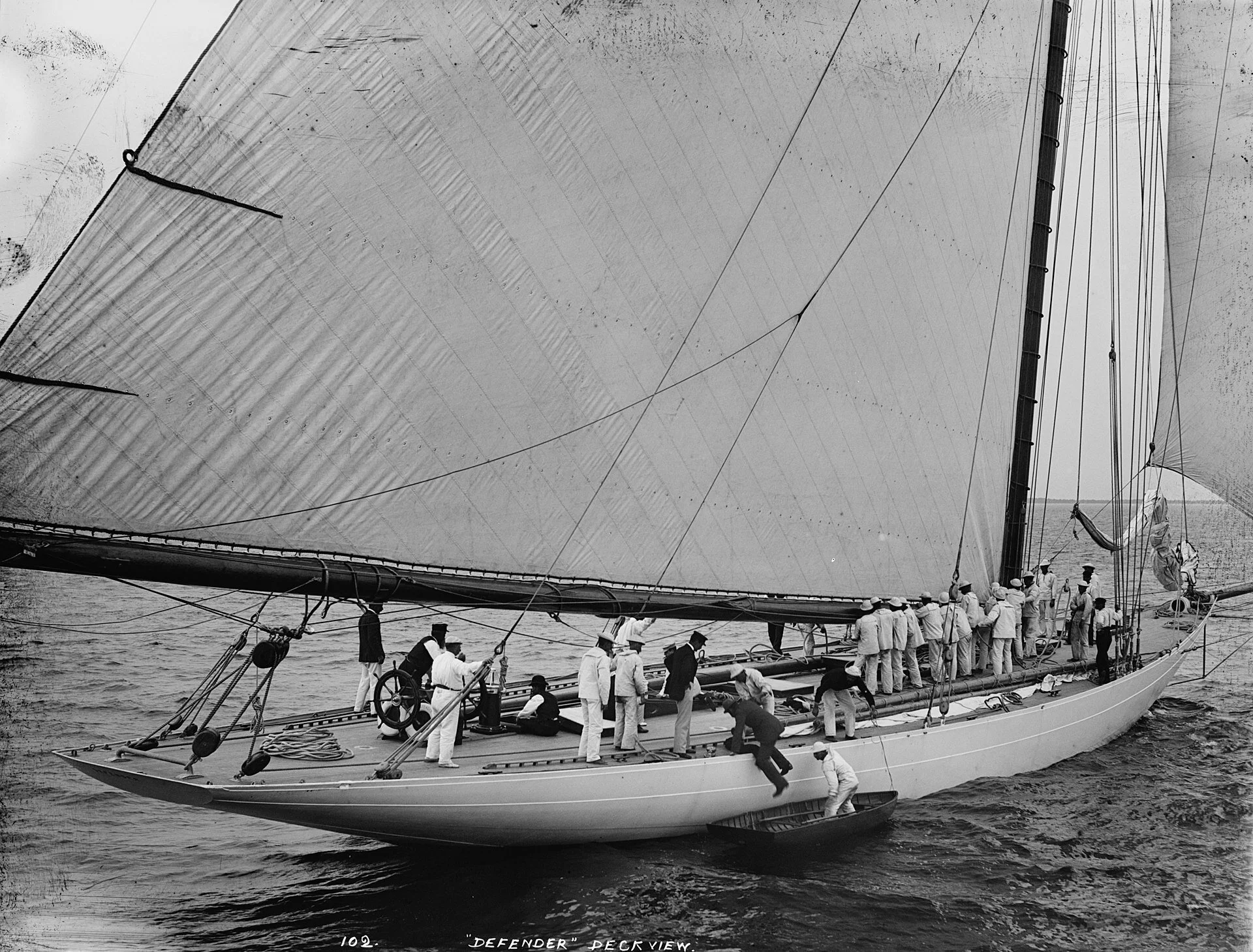
Wave action at Rough Point
The Rough Point mansion from Newport’s Cliff Walk.
From Robert Whitcomb’s “Digital Diary,’’ in GoLocal24.com
It’s nice when artists and others use New England’s innumerable beautiful outdoor spaces for exhibitions.
Thus it is with artist Melissa McGill’s coming show “In the Waves’’ at Newport’s Rough Point (which we used to call Rough Trade), the estate of late and deeply eccentric, indeed creepy (but philanthropic!) billionairess Doris Duke.
Ms. McGill has put out a call for young people to participate in the show, set for next month and meant to focus attention on global warming-caused sea-level rise and other man-caused environmental issues. Dodie Kazanjian, the founder of Art & Newport, is the curator of the exhibition.
This spectacle involves Ms. McGill painting waves on fabric made out of recycled plastic pulled from the ocean; plastic pollution has become a huge menace to sea life. The young people participating in the spectacle will use handles at the ends of long fabric strips to create motion to mimic that of waves.=
“I’m painting the waves in a very expressive way, with the different colors that reference the ocean at Rough Point,” Ms. McGill told the Newport Daily News’s Sean Flynn, in a fun article. “I have done studies and research so they really evoke the ocean there.” (Does the ocean at Rough Point really look that much different than the ocean anywhere?)=
For more information, please hit this link.
xxx
Coastal flooding in Marblehead, Mass., during Superstorm Sandy on Oct. 29, 2012
xxx
As the seas rise, more and more people will have to move back from the shore and abandon their homes on land that’s increasingly vulnerable to flooding. That land will be left as a buffer to mitigate damage from storms. How much of it can be turned into public open space, as parks, bringing something good from the situation?
By the way, although it was published back in 1999, Cornelia Dean’s prescient book Against the Tide: The Battle for America’s Beaches, remains a dramatic, prescriptive (and often alarming) guide to the issues around rising seas and coastal development. Ms. Dean, the former New York Times science editor, continues to study the not-very-slow-motion coastal crisis.
‘Scarred hopes outworn’
1909 postcard
Over the hill between the town below
And the forsaken upland hermitage
That held as much as he should ever know
On earth again of home, paused warily.
The road was his with not a native near;
And Eben, having leisure, said aloud,
For no man else in Tilbury Town to hear:
"Well, Mr. Flood, we have the harvest moon
Again, and we may not have many more;
The bird is on the wing, the poet says,
And you and I have said it here before.
Drink to the bird." He raised up to the light
The jug that he had gone so far to fill,
And answered huskily: "Well, Mr. Flood,
Since you propose it, I believe I will."
Alone, as if enduring to the end
A valiant armor of scarred hopes outworn,
He stood there in the middle of the road
Like Roland's ghost winding a silent horn.
Below him, in the town among the trees,
Where friends of other days had honored him,
A phantom salutation of the dead
Rang thinly till old Eben's eyes were dim.
Then, as a mother lays her sleeping child
Down tenderly, fearing it may awake,
He set the jug down slowly at his feet
With trembling care, knowing that most things break;
And only when assured that on firm earth
It stood, as the uncertain lives of men
Assuredly did not, he paced away,
And with his hand extended paused again:
"Well, Mr. Flood, we have not met like this
In a long time; and many a change has come
To both of us, I fear, since last it was
We had a drop together. Welcome home!"
Convivially returning with himself,
Again he raised the jug up to the light;
And with an acquiescent quaver said:
"Well, Mr. Flood, if you insist, I might.
"Only a very little, Mr. Flood—
For auld lang syne. No more, sir; that will do."
So, for the time, apparently it did,
And Eben evidently thought so too;
For soon amid the silver loneliness
Of night he lifted up his voice and sang,
Secure, with only two moons listening,
Until the whole harmonious landscape rang—
"For auld lang syne." The weary throat gave out,
The last word wavered; and the song being done,
He raised again the jug regretfully
And shook his head, and was again alone.
There was not much that was ahead of him,
And there was nothing in the town below—
Where strangers would have shut the many doors
That many friends had opened long ago.
— “Mr. Flood’s Party,’’ by Edwin Arlington Robinson (1869-1935). Tilbury Town is based on Robinson’s hometown of Gardiner, Maine.
‘She gives of her strength’
“Hold your hands out over the earth as over a flame. To all who love her, who open to her the doors of their veins, she gives of her strength, sustaining them with her own measureless tremor of dark life.’’
— Henry Beston (1888-1968), American writer and naturalist, in The Outermost House, the classic story of the time he spent living alone in a shack on Cape Cod’s Nauset Beach.
'Like a dream of beauty'
View of Mt. Kearsarge, in Wilmot and Warner, N.H.
“We must admit, spring is annoying, summer is not ours, autumn is best — and winter is New England’s truesy weather.’’
— Donald Hall (1928-2018), poet and essayist, in Here at Eagle Pond, inspired by his life on his ancestral farm in Wilmot, N.H.
“When summer gathers up her robes of glory, and like a dream of beauty glides away.’’
— Sarah Helen Whitman (1803-1878) from her Poems. She was an American poet, essayist, transcendentalist, and a romantic interest of Edgar Allan Poe. She was born and died in Providence.
What's that lurking in the woods?
“A View from Behind Me” (oil on canvas), by Brad Archambault, in the show “The Great Outdoors,’’ at the Brickbottom Artists Association, Somerville, Mass.
The gallery says:
“The past year has shown us how great ‘The Great Outdoors’ really is! The visual interest, the psychological and emotional connection, the freedom and also the safety it allowed. In this group exhibition, BAA members examine and interpret the outdoors from every angle: landscapes (natural and built), sea, sky, earth, weather.… Perspective is everything; even a window box or a bird feeder are ‘the great outdoors’ to a cat sitting at a closed window.’’
Llewellyn King: Nuclear literacy can save nuclear power
The Millstone Nuclear Power Station, on Long Island Sound in Waterford, Conn.
WEST WARWICK
In its first two decades of service, the Douglas DC-3 -- maybe the most amazing, safe and hardworking aircraft ever built -- was denounced in folk legend as wildly unsafe. It was branded a flying coffin by those who didn’t know the data.
The myth that it wasn’t airworthy matured into an out-and-out lie. In fact, the DC-3 was the workhorse that rapidly accelerated modern passenger aviation.
The DC-3 was saved by growing aviation literacy in the public. Can nuclear literacy save nuclear power, one of the greatest tools in containing global warming? I believe that it can. Literacy trumps myth and superstition.
While nuclear power has comparisons with the venerable DC-3, it is far more important than any single airplane. Those who turn their backs on nuclear power -- so needed as climate change accelerates – are akin to those who without knowledge were turning their backs on passenger aviation in 1935.
Today’s major public argument against nuclear power is that it leaves behind radioactive materials -- lumped together as nuclear waste – which will be radioactive for 10,000 years, about twice recorded human history.
This argument conjures up images of a monster, breaking out of its repository and marching the Earth, laying waste to whatever stands in its way -- a nuclear blob from a science fiction movie.
Truth is, in about 200 years, most high-level nuclear waste will have decayed into something less radioactively aggressive. In the first 30 years, it gets less toxic and more manageable.
As this explanation by William Reville, an eminent emeritus professor of biochemistry at University College Cork, published in the Irish Times, explains succinctly, “ The intense radioactivity reflects the preponderance of short-lived radioisotopes that are disintegrating quickly.
“This high rate of nuclear decay means the level of radioactivity declines quickly – the radioactivity of spent nuclear fuel reduces to 10-20 percent of its initial activity within six months of its removal from the reactor and within a few decades, the radioactivity reduces by a further factor of two. Radioactivity danger is largely gone within 100 years and within a few thousand years, the stored spent fuel is little more radioactive than the uranium ore that first came out of the ground to be fabricated into new fuel rods.”
Despite this science, when I advocate nuclear, which I have done for a long time, people roll their eyes and say, “What about the waste?” The waste does need to be stored safely, but it decays to a safe state quite quickly.
The most agonized-over nuclear material is the transuranic plutonium. Yes, it will last thousands of years, but it is easily shielded because it is an alpha emitter: It can’t penetrate human skin and can be blocked with a piece of notepaper. Natural uranium, found in rocks nearly everywhere, is an emitter, as is thorium, found in conjunction with rare earths. Radiation is everywhere. It isn’t the devil’s incarnation.
Those facing the climate crisis tend to shy away from nuclear and advocate only wind and solar. Little thought is given to the waste that these low-density energy sources are themselves going to produce.
Wind will create a huge volume of physical waste from the disposal of carbon-fiber turbine blades. These don’t recycle, unlike the steel towers on which the turbines rest. Eventually, tens of millions of tons of solar panels will make their way to landfills.
If you want to fret about waste -- and you should -- look to the garbage that is crowding the landfills, especially plastic which doesn’t break down. Look to the billions of tons of junk that is making its way into the oceans, killing marine life, and shudder.
The Earth can take a lot of nuclear waste from power plants, advanced medicine and reactors aboard navy ships and spacecraft. But can it take much more of the alternative?
Aviation literacy saved aviation from myth, even after disasters. Myth is a dangerous force when it is the foundation of policy.
If you want a good, safe myth, go with the tooth fairy.
Llewellyn King is executive producer and host of White House Chronicle, on PBS. His email is llewellynking1@gmail.com, and he’s based in Rhode Island and Washington, D.C.
Linda Gasparello
Co-host and Producer
"White House Chronicle" on PBS
Mobile: (202) 441-2703
Website: whchronicle.com
ReplyReply allForward
New England getting more goats
Milking a goat
Getting Their Goats
I spend quite a lot of time in rural upland New England, and have seen an increase in the number of farmers supplementing or even replacing the revenue from dairy cows and beef cattle with that from goats raised for their milk. The milk, and the cheese and yogurt made from it, is healthier for you than cows’ milk. And goats require less food and make fewer demands on the environment, including releasing less methane than cows. Further, they’re highly efficient at keeping land open; yes, goats really do feast on stuff that cows won’t touch.
Further, they’re much more entertaining: They have stronger personalities than cows. And look at the baby goat craze!
Goats are remarkably agile; some will climb trees to browse.
— Photo by Elgaard
Look at each other
“‘C.B.’, 2011, Brockton, Massachusetts’’ (photograph printed on weatherproof vinyl) by Mary Beth Meehan, at WaterFire Arts Center, Providence, in her show “Eye to Eye: Photographs and Projects.’’
The gallery explains that Ms. Meehan photographs the diverse American landscape and experience, while urging us to pay attention to each other across differences of race, class, culture and religion. The photographs from the artist’s in-depth projects explore Brockton, Mass.; Providence; Newnan, Ga., and Silicon Valley, California.’’
Frank Carini: Plastic pollution is burying a coastline
Rhode Island beach scene
—Photo by Frank Carini
From ecoRI News (ecori.org)
Dave McLaughlin has been organizing, leading and documenting Rhode Island shoreline cleanups for the past 15 years, and he’s noticed one item, which comes in all shapes, sizes and colors, becoming increasingly prevalent: plastic.
When the Middletown-based nonprofit he leads, Clean Ocean Access, began cleaning up Aquidneck Island’s coastline in 2006, staff and volunteers found bed frames, tires, refrigerators, glass bottles, aluminum cans and lots of fishing gear.
Today, a deluge of plastic now swamps the shoreline. McLaughlin said the petroleum-based tidal wave began about a decade ago. Besides the typical debris of plastic bags, straws, Capri Sun pouches, Styrofoam cups, candy wrappers and omnipresent cigarette butts — most filters are made of cellulose acetate, a plastic — this evolving pollution now features Jewel pods and the explosion of single-use plastics and multilayered packaging.
Multilayered packaging has several thin sheets of different materials, such as aluminum, paper and plastic, that are laminated together. It’s not made for recycling.
This growing amount of plastic packaging is washing up on shorelines worldwide, including along the Ocean State’s 420 miles of coast — arguably the state’s most important economic engine. In 2015, about 45 percent of plastic waste generated globally was from packaging materials, according to a 2018 white paper. A 2017 report found up to 56 percent of plastic packing manufactured in developing countries consists of multilayered materials.
It’s been estimated that every U.S. household uses nearly 60 pounds of multilayered packaging annually. Most isn’t or can’t be recycled, and much, like other plastic-related trash, ends up in the sea or washed up along the coast.
As of 2019, Clean Ocean Access had held 1,171 cleanups and removed nearly 69 tons of marine debris — about 118 pounds per cleanup — from Aquidneck Island’s shoreline and out of its coastal waters. Of the 14 most common items collected on land, half have been predominantly plastic: straws and stirrers; 6-pack holders; food wrappers; caps and lids; bottles; bags; and toys, according to the organization’s 2006-2019 Clean Report.
Of the 13 most common items pulled from the marine waters of Portsmouth, Middletown and Newport, five are plastic heavy: bleach and cleaning bottles; fishing line; sheets and tarps; strap bands; and buoys and floats.
All of these plastic items, on land and in the water, continue to break down into smaller and smaller toxic pieces that work their way up the food chain.
July Lewis, volunteer manager for Save The Bay, has been involved with shoreline cleanups since 2007. She said the one trend that is inescapable is the growing amount of microplastics and “tiny trash” — what she called pulverized pieces of bottle caps, cups and other plastics — that litter Rhode Island’s coastline.
“We are seeing more and more of it every year,” Lewis said. “It’s become part of the ecosystem.”
Peter Panagiotis, the well-known professional surfer better known as Peter Pan, has been surfing in Rhode Island waters, mostly along the coast of Narragansett, since 1963. He told ecoRI News that plastic now litters the coastline.
“There’s more plastic pollution, especially in the winter there is garbage everywhere,” the Pawtucket resident said. “Plastic pollution is the problem. There’s a lot more plastic garbage.”
Plastic debris makes up a growing amount of the material that is picked up annually during Save The Bay coastal cleanups. In 2019, 2,807 volunteers collected 7.8 tons of trash along 94 miles of shoreline — or about 5.5 pounds per person and 166 pounds per mile.
Of the material collected that year, plastic and foam pieces less than 2.5 centimeters long accounted for 27 percent of all the rubbish collected — 42,841 pieces of tiny trash. Microplastics, pieces less than 5 millimeters long (0.5 centimeters), are harder to see and pick up, but they are a growing presence.
The repulsive 2019 haul included plenty of other plastic: candy and chip wrappers (11,136); bags (6,213); straws and stirrers (4,629); lids (1,942); and utensils (1,050).
For nearly a decade, Geoff Dennis has been a one-man cleanup crew for the Little Compton shoreline. Dennis “got a taste for trash” while walking along Goosewing Beach in 2012.
“It really bothers me. The first time I walked with the dog, I came back with over 100 Mylar balloons,” he told ecoRI News in 2017. “If I can start a conversation with people about it, that’s great. But most people just don’t care.”
Between 2012 and 2020, the longtime quahogger picked up 35,607 pieces of trash along the banks of the Sakonnet River and at Goosewing Beach Preserve and a few other places. The vast majority of it was some form of plastic, from bottles to wads for shotgun shells.
In fact, the amount of plastic he has collected just along Little Compton waters is shocking:
Balloons made from the resin polyethylene terephthalate, a clear, strong and lightweight plastic belonging to the polyester family and commonly referred to as Mylar, a registered trademark owned by Dupont Tejjin Films (2012-20): 8,510. That total doesn’t include the 1,194 latex balloons he collected in 2019 and ’20.
Plastic bottle caps (2017 and 2020): 4,107.
Plastic shotgun shells (2017 and 2020): 1,552.
Plastic wads for shotgun shells (2017 and 2020): 527.
Plastic straws (2016-19): 1,526.
Plastic snack bags (2015-2020): 867.
Plastic bags (2018-2020): 440.
Plastic and foam cups (2018-2020): 386.
Plastic coffee cup lids (2020): 94
K-Cup pods (2019 and 2020): 210.
Plastic nips (2020): 207.
Plastic lighters (2017 and 2020): 188.
Plastic bottles and aluminum cans (2012-2020): 15,324.
In some places along Rhode Island’s marine waters, such as Fields Point in Providence, plastic pollution is now part of the shoreline environment. (Save The Bay)
Lewis noted that in some places, such as Fields Point, at the head of Narragansett Bay in Providence, plastic litter is indistinguishable from the natural world. She said most of this shoreline litter is generated from eating, drinking and smoking.
Save The Bay, too, is finding plenty of plastic flotsam and jetsam bobbing in Rhode Island’s coastal waters. The Providence-based organization is playing a leading role in establishing baseline data on the amount of microplastics within the Narragansett Bay watershed. The goal is to highlight this growing problem and draw attention to regional efforts to eliminate single-use plastics, such as cups, straws and bags.
The three staffers — Michael Jarbeau, Kate McPherson and David Prescott — largely responsible for conducting Save The Bay’s trawls for plastic have been surprised by how much they have found in local waters. When they started, they expected some microplastic trawls would come up empty. They’re still waiting for that to happen.
The crew has done more than 24 surface trawls, and every one has produced plastic bits, from nurdles, the raw building blocks for plastic bottles, bags and straws, to microfibers from polyester fleeces and other synthetic clothing to microbeads, which are used in exfoliating scrubs and in some toothpastes.
All of this overused plastic is changing the composition of Rhode Island’s marine waters. These petroleum byproducts don’t biodegrade. They remain in the environment for centuries. Their long-term impacts on environmental and public health aren’t close to being fully understood. Their impact on the natural world, however, has already been well documented.
Plastic bags float in Narragansett Bay, Block Island Sound and the Ocean State’s other marine waters like jellyfish. Turtles, whales and other sea animals often mistake them for food, causing many to starve or choke to death.
Adult seabirds inadvertently feed tiny trash to their chicks, often causing them to die when their stomachs become filled with fake food. As plastic breaks down into smaller fragments — microplastics may contain toxic chemicals as part of their original plastic material or adsorbed environmental contaminants such as PCBs — fish and shellfish become increasingly vulnerable to the toxins these polluted particles collect.
At least two-thirds of the world’s fish stocks are suffering from plastic ingestion, including local seafood favorites striped bass and quahogs.
On the positive side of the Ocean State’s shoreline trash problem, both McLaughlin and Lewis said they are seeing less dumping of big items, such as tires and appliances.
clean-ups by volunteers seem futile, a new batch will soon appear. Why aren't officers of the companies that make these plastics required to clean it up or pay someone to do so?
Frank Carini is editor of ecoRI News.
'Immortal force no longer needed'
— Photo by Neeme Sihv
The farmhouse lingers, though averse to square
With the new city street it has to wear
A number in. But what about the brook
That held the house as in an elbow-crook?
I ask as one who knew the brook, its strength
And impulse, having dipped a finger length
And made it leap my knuckle, having tossed
A flower to try its currents where they crossed.
The meadow grass could be cemented down
From growing under pavements of a town;
The apple trees be sent to hearth-stone flame.
Is water wood to serve a brook the same?
How else dispose of an immortal force
No longer needed? Staunch it at its source
With cinder loads dumped down? The brook was thrown
Deep in a sewer dungeon under stone
In fetid darkness still to live and run—
And all for nothing it had ever done
Except forget to go in fear perhaps.
No one would know except for ancient maps
That such a brook ran water. But I wonder
If from its being kept forever under,
The thoughts may not have risen that so keep
This new-built city from both work and sleep.
“A Brook in the City,’’ by Robert Frost (1874-1963)
—
Chris Powell: Connecticut’s ‘self-defense’ terrorists
Bring them in.
MANCHESTER, Conn.
Connecticut has its own aspiring terrorist and subversive group, and it's not the Ku Klux Klan, the Proud Boys or even al-Qaeda.
No, it's the Self-Defense Brigade of "the Reverend" Cornell Lewis, of Hartford and Power Up Connecticut founder Keren Prescott, of Manchester, who are stomping around the state displaying guns and other weapons to show that they are serious about interfering with anyone they dislike and eventually overthrowing democratic government.
In candid interviews with the {Manchester} Journal Inquirer's Eric Bedner, Lewis and Prescott maintained that they aren't going to follow the laws and rules of decent conduct that apply to everyone else. Their politics elevates them above those things.
The Lewis-Prescott gang first paraded its guns at a protest June 9 at the site of construction of an Amazon warehouse in Windsor, Conn., in which two nooses had been found without any accompanying explanation. "There is nothing like Black people exercising their Second Amendment right to get folks moving," Prescott said. "We are tired of being nice."
Of course flaunting guns is a bit more threatening than whatever those unattended nooses meant.
Two days later on the Windsor town green the Lewis-Prescott gang broke up a "unity" rally against racism. Gang members, supposedly foes of racism, hurled racist taunts at the rally's organizers.
Prescott warns: "We are going to continue to disrupt."
Indeed, Lewis threatens the warehouse project with destruction. "We're going to close it down," he says. "They're not going to be able to work on that site for a while after we're finished with it."
Lewis's ambition goes farther. "Democracy," he says, "has failed the oppressed in this country. I believe democracy gave birth to and continues to nurture the endemic racism that the oppressed face. We must disrupt, dismantle, and then disperse the democratic system because it does not help us in our existential condition and the oppression we live with."
Of course, the country is full of self-obsessed loons who ordinarily are of little importance. The problem with the Lewis-Prescott gang is that state and local government officials, members of the clergy, and other well-meaning people, especially in Windsor and Manchester, have been humoring the gangsters either in the belief that their objectives have merit or out of fear of becoming their next target.
But the more the gangsters are humored, the more threatening they get.
The country and Connecticut are also full of racial disparities arising from pernicious government policies, such as social promotion in schools, subsidies for fatherlessness and exclusive zoning. But the Lewis-Prescott gang's obsession and fetish, the nooses found at the Amazon warehouse, could not be less relevant to racial justice. One of these days the worthies who have been humoring and helping to publicize the gang should find the courage to stop and leave them to the police and FBI.
xxx
For a few days six weeks ago the killing of Henryk Gudelski was a sensation in Connecticut. But it has disappeared from the news and discussion at the state Capitol, where legislators expressed concern about it before adjourning. Gudelski was the 53-year-old New Britain resident run down in the city June 29 by a stolen car apparently driven by a 17-year-old boy with a long criminal record who still had been freed by the juvenile-justice system.
Legislative leaders said they would review juvenile justice procedures but nothing has happened, probably because nobody in authority wants to press the crucial questions, which were implied by a former state legislator and criminal justice expert who discussed the case in a radio interview two weeks ago. Somebody, the former legislator acknowledged, had "really messed up."
Indeed — but exactly who, how, and why, and how can the public and its representatives find out as long as the juvenile justice system remains secret by law? How does that secrecy benefit justice?
Of course it doesn't. Secrecy benefits only the proprietors of the system.
But this secrecy will be preserved because in Connecticut exempting government employees and failed policies from accountability remains more important politically than Gudelski's life — and anyone else's.
Chris Powell is a columnist for the Journal Inquirer, in Manchester.
The mosquito air force
“Taking Flight’’ (mixed media on braced panel), by Fran Busse, at Alpers Fine Art, Andover, Mass. She’s based in West Concord, Mass.
Diversifying a rural N.H. college
The Lyons Academic Center at New England College, in Henniker, N.H.
Via The New England Council (newenglandcouncil.com)
BOSTON
“In a state where colleges and universities struggle to recruit racially diverse student bodies, New England College, whose main campus is in Henniker, N.H., has gained recognition for its commitment to recruiting diverse students. To date, 36.2 percent of the college’s 1,135 resident students identify as African-American, Hispanic, Asian, or more than one race.
“New England College’s success comes as a result of a recruitment strategy overseen by the college’s president, Michelle Perkins. Through this strategy, demographic data provided through standardized testing is purchased and then used to identify and target racially diverse students for recruitment. Moreover, New England College focuses this recruitment tactic on students from working-class communities in locations in and outside of New England, such as Philadelphia, New York and parts of Florida.
“When others doubted President Perkins’s goal of achieving campus diversity in a rural area of predominantly white New Hampshire, her response was simple: ‘I didn’t believe it.’
“‘We’ve invested a lot in identifying students from all over the country. A lot of them are first-generation college students. Usually, when you are a first-generation student, you have financial needs. We are very generous in our scholarship and grant programs,’ she explained.’’
Henniker Bridge, over the Contoocook River, connects the college’s main campus with its athletic fields and the town center and is listed on the New Hampshire State Register of Historic Places.
— Photo by ctchmeifucan
New England College’s Institute of Art & Design in Manchester, N.H.
Seen from (a) space
“Lucekke {a surname} Conglomerate” (paint, gypsum powder, resin), by John V. Ralston, in the “New England Regional Collective ‘‘ show at Galatea Fine Art, Boston, Aug. 6-Aug. 29
Black or white only
Nathanael Herreshoff climbing aboard Defender in 1895; Herreshoff designed five successful America’s Cup defenders in 1993-1920, including Defender.
-- Photo by John S. Johnston
“There are only two colors to paint a boat, black or white, and only a fool would paint a boat black.’’
— Nathanael G. Herreshoff (1848-1938), famed naval architect. He was born and died in Bristol, R.I. He died on June 2, 1938, thereby missing the great hurricane that wrecked the Herreshoff boatyard in Bristol on Sept. 21 of that year.
Star power
“Star’’ (mixed media), by Paul Resika and the late Varujan Boghosian, in a show at the Berta Walker Gallery, Provincetown, Mass., through Aug. 14.
The gallery’s motto is “the history of American Art as seen through the eyes of Provincetown.’’
Don Pesci: Unstable Democratic coalition is breaking down
— Photo by Heptagon
VERNON, Conn.
Former Vice President Joe Biden may have campaigned for president as a Kennedy Democrat, but his nose ring while in office has been fashioned in a far-left smithy. And whenever Biden feels the tug, he moves inexorably to the left.
When the late Barry Goldwater said “If you lop off California and New England, you’ve got a pretty good country,” he meant that the ideological and historical center of the country should be central to Democrat and Republican politics.
U.S. House Speaker Nancy Pelosi and U.S. Senate Majority Leader Chuck Schumer naturally think differently. The locus of political power within the Democratic Party is precisely that portion of the country Goldwater would have lopped off, the New England states plus New York and California. Pelosi is from California, Schumer from New York.
Since the Obama administration, the national Democratic Party has been able to cobble together a majority by including within its “Big Tent,” more narrowly constricted ideologically than most people realize, an eccentric coalition of the supposed disenfranchised: African Americans, some of whom are now straying dangerously into conservative territory; working women, enfranchised by the 19th Amendment, enacted in 1920, and liberated from their kitchens by World War II; paroled criminals; libertarian drug users; chronic gamblers; citizens of Honduras who have crashed our border with Mexico and who, some mildly assert, may not be prevented from voting in U.S. elections if they are not compelled to produce at poll stations proof of citizenship; Critical Race Theorists who really do believe, solipsistically, that U.S. history has always revolved around a racial- discrimination pole; teachers who would rather stay home than teach; a Coronavirus-sidelined General Assembly that continues to rent out to Connecticut’s governor powers and responsibilities the constitution assigns to legislators; cities, most of them run by Democrats during the past half century, smoldering in violence and crime induced, leftists believe, by ill-mannered, unrestrained cops; and so on and so on…
We are witnessing the breakdown of this temporary and unstable coalition. And the battering rams smashing it are unblinking views of reality.
The mother of a three-year-old child murdered by a 19 year-old kid who couldn’t shoot straight knows, in her heart of hearts, that the politicians who showed up in Hartford to mug for the TV cameras were not there to help, because nothing they had done in the past half century in Hartford had helped to reduce crime or make any Connecticut large city as pleasant and prosperous a place to live as, say, Glastonbury, a suburb of Hartford lately experiencing its own uptick in crime.
In a previous posting, “Politicians And The Memory Hole”, this writer predicted at the time that “it would take politicians who turned up to commiserate with stricken family members – [Connecticut Sen. Dick] Blumenthal, known to show up, as he said, ‘at garage door openings,’ appeared to be absent without a by-your-leave -- only a few hours to forget the child’s name. A 29 year-old woman, walking her dog a few blocks from the murder scene, was asked by a reporter to comment. ‘I was raised in this neighborhood,’ she said, ‘It’s always been kind of a thing, especially when the weather starts to warm up. It’s kind of expected.’”
Along with the dominant Democratic Party in Connecticut, leaning left for a good many years, those who report on politics in the state also are left-leaning. Partly, this is natural. Reporters report on power-players, and the Connecticut GOP, especially in cities, has been unplugged for a long while. Editorial page editors listing left are temperamentally hostile to contrarians, many of them preferring supportive opinion that reaffirm editorial views.
It is human nature to purr at flattery.
“Everyone likes flattery,” Benjamin Disraeli, British prime minister in Victorian days, said, “and when you come to royalty, you should lay it on with a trowel.”
Leading Democrats in Connecticut are the state’s royalty.
Contrarian opinion on op-ed pages is a marker indicating editorial vigor. To put it mildly, one does not find contrarian opinion on matters affecting the state laid on with a trowel in most Connecticut news publications. Then too, it is easier, indeed effortless, to swim with rather than against the current. G. K. Chesterton, a favorite contrarian, tells us that even a dead thing can flow with the current, but only a live body can struggle effectively against the current. Swimming upstream against the current is becoming in Connecticut a rare heroic act.
If Republicans were to capture more seats in the General Assembly, maybe even the governor’s office, Connecticut’s media might, for business reasons, be more open to contrary opinion. And, of course, contrarian opinion just might enliven papers and boost sagging sales.
Don Pesci is a Vernon-based columnist.
Julie Appleby: Biogen launches propaganda campaign to promote its costly Alzheimer’s drug
Cognitive tests such as the Mini–Mental State Examination (MMSE) can help diagnose Alzheimer's disease. In this test instructions are given to copy drawings like the one shown, remember some words, read, and subtract numbers serially.
Do you sometimes lose your train of thought or feel a bit more anxious than is typical for you?
Those are two of the six questions in a quiz on a Web site co-sponsored by the makers of Aduhelm, a controversial new Alzheimer’s drug. But even when all responses to the frequency of those experiences are “never,” the quiz issues a “talk to your doctor” recommendation about the potential need for additional cognitive testing. The drug would cost an estimated $55,000 a year per patient.
Facing a host of challenges, Aduhelm’s makers Cambridge, Mass.-based Biogen and its partner Tokyo-based Eisai are taking a page right out of a classic marketing playbook: Run an educational campaign directed at the consumer, one who is already worried about whether those lost keys or a hard-to-recall name is a sign of something grave.
The campaign — which also includes a detailed advertisement on The New York Times’ Web site, a Facebook page and partnerships aimed at increasing the number of places where consumers can get cognitive testing — is drawing fire from critics. They say it uses misleading information to tout a drug whose effectiveness is widely questioned.
“It’s particularly egregious because they are trying to convince people with either normal memories or normal age-related decline that they are ill and they need a drug,” said Dr. Adriane Fugh-Berman, a pharmacology professor at Georgetown University Medical Center, who wrote about the website in an opinion piece.
The Web site’s “symptoms quiz” asks about several common concerns, such as how often a person feels depressed, struggles to come up with a word, asks the same questions over and over, or gets lost. Readers can answer “never,” “almost never,” “fairly often” or “often.” No matter the answers, however, it directs quiz takers to talk with their doctors about their concerns and whether additional testing is needed.
While some of those concerns can be symptoms of dementia or cognitive impairment, “this clearly does overly medicalize very common events that most adults experience in the course of daily life: Who hasn’t lost one’s train of thought or the thread of a conversation, book or movie? Who hasn’t had trouble finding the right word for something?” said Dr. Jerry Avorn, a professor of medicine at Harvard Medical School who has been sharply critical of the approval.
Aduhelm was approved in June by the Food and Drug Administration, but that came after an FDA advisory panel recommended against it, citing a lack of definitive evidence that it works to slow the progression of the disease. The FDA, however, granted what is called “accelerated approval,” based on the drug’s ability to reduce a type of amyloid plaque in the brain. That plaque has been associated with Alzheimer’s patients, but its role in the disease is still being studied.
News reports also have raised questions about FDA officials’ efforts to help Biogen get Aduhelm approved. And consumer advocates have decried the $56,000-a-year price tag that Biogen has set for the drug.
On the day it was approved, Patrizia Cavazzoni, the FDA’s director of the Center for Drug Evaluation and Research, said the trial results showed it substantially reduced amyloid plaques and “is reasonably likely to result in clinical benefit.”
Describing the Web site as part of a “disease awareness educational program,” Biogen spokesperson Allison Parks said in an email that it is aimed at “cognitive health and the importance of early detection.” She noted that the campaign does not mention the drug by name.
On July 22, in “an open letter to the Alzheimer’s disease community,” Biogen’s head of research, Dr. Alfred Sandrock, noted the drug is the first one approved for the condition since 2003 and said it has been the subject of “extensive misinformation and misunderstanding.” Sandrock stressed a need to offer it quickly to those who have only just begun to experience symptoms so they can be treated before the disease moves “beyond the stages at which Aduhelm should be initiated.”
While the drug has critics, it is also welcomed by some patients, who see it as a glimmer of hope. The Alzheimer’s Association pushed for the approval so that patients would have a new option for treatment, although the group has objected to Biogen’s pricing and the fact that it has nine years to submit follow-up effectiveness studies.
“We applaud the FDA’s decision,” said Maria Carrillo, chief science officer for the association. “There’s a benefit to having access to it now” because it is aimed at those in the early stages of dementia. Those patients want even a modest slowdown in disease progression so they have more time to do the things they want to accomplish, she said.
The drug is given by infusion every four weeks. It also requires expensive associated care. About 40 percent of the patients in the trials experienced brain swelling or bleeds, so regular brain imaging scans are also required, according to clinical trial results and the drug’s label. In addition, patients will likely need to be checked for amyloid protein, which is done with expensive PET scans or invasive spinal taps, according to Alzheimer’s experts.
To educate more potential patients, and customers, Biogen announced it has teamed with CVS to offer cognitive testing, and with free clinics for dementia education efforts.
Biogen is also picking up some of the laboratory costs for patients who get a spinal tap.
Still, the drug faces headwinds: There’s a congressional probe of the drug’s approval, the head of the FDA has called for an independent investigation of its review process, and there’s pushback from policy experts and insurers over its price, which they say could seriously strain Medicare’s finances. Some medical systems, including the Cleveland Clinic and Mount Sinai, say they won’t administer it, citing efficacy and safety data.
None of that is mentioned in Biogen’s campaign.
Instead, the advertisements and Web sites focus on what is called mild cognitive impairment, including a warning that 1 in 12 people over age 50 have that condition, which it describes as the earliest clinical stage of Alzheimer’s.
On its Web site, Biogen doesn’t cite where that statistic comes from. When asked for the source, Parks said Biogen’s researchers made some mathematical calculations based on U.S. population data and data from a January 2018 article in the journal Neurology.
Some experts say that percentage seems high, particularly on the younger end of that spectrum.
“I can’t find any evidence to support the claim that 1 in 12 Americans over age 50 have MCI due to Alzheimer’s disease. I do not believe it is accurate,” said Dr. Matthew S. Schrag, a vascular neurologist and assistant professor of neurology at Vanderbilt University Medical Center, in Nashville.
While some people who have mild cognitive impairment progress to Alzheimer’s — about 20 percent over three years — most do not, said Schrag: “It’s important to tell patients that a diagnosis of MCI is not the same as a diagnosis of Alzheimer’s.”
Mild cognitive impairment is tricky to diagnose — and not something a simple six-question quiz can uncover, said Mary Sano, director of the Alzheimer’s Disease Research Center at the Icahn School of Medicine in New York.
“The first thing to determine is whether it’s a new memory problem or a long-standing poor memory,” said Sano, who said a physician visit can help patients suss this out. “Is it due to some other medical condition or a lifestyle change?”
Carrillo, at the Alzheimer’s Association, agreed that MCI can have many causes, including poor sleep, depression or taking certain prescription medications.
Based on a review of medical literature, her organization estimates that about 8 percent of people over age 65 have mild cognitive impairment due to the disease.
She declined to comment on the Biogen campaign but did say that early detection of Alzheimer’s is important and that patients should seek out their physicians if they have concerns rather than rely on “a take-at-home quiz.”
Schrag, however, minced no words in his opinion of the campaign, saying it “feels like an agenda to expand the diagnosis of cognitive impairment in patients because that is the group they are marketing to.”
Julie Appleby is a journalist with Kaiser Health News.
‘Moxie' —the painting, the drink and the courage
“Moxie” (acrylic on canvas), by William Conlon, in the group show art “Here & There,’’ at Cove Street Arts, Portland, Maine, through Sept. 11. Mr. Conlon lives and works on an island in Portland in the summer and in New York City in the fall.
The show features the work of 16 artists bridging the Pine Tree State and New York City.
The gallery says: “Since the early 1800s, artists have been drawn to Maine for its rugged coastline, its mysterious, primeval-feeling forests, and its magnificent quality of light. Later, Modernists such as Marsden Hartley, John Marin, Max Weber, and Marguerite and William Zorach made their summer homes here, establishing a trend that continued, post-World War II, when Maine became an annual destination for New York artists seeking respite and rejuvenation from the grit and the fast-flashing pace of the city.”
Portland from above, looking north along I-295. Note the islands in Casco Bay.
— Photo by Tye dye 9205
The word “moxie’’ has New England roots. It’s a carbonated beverage brand that was among the first mass-produced soft drinks in the United States. It was created around 1876 by Augustin Thompson (born in Union, Maine) as a patent medicine called "Moxie Nerve Food" and was produced in Lowell, Mass.
It’s flavored with gentian root extract, a very bitter substance commonly used in herbal medicine.
Moxie, designated the official soft drink of Maine in 2005, continues to be regionally popular today, particularly in New England. It was produced by the Moxie Beverage Co. of Bedford, N.H., until Moxie was purchased by The Coca-Cola Co. in 2018.
The name has become the word "moxie" in American English, meaning courage, daring, or determination. It was a favorite word of the ruthless Joseph P. Kennedy, father of the famous political family that included President John F. Kennedy. If he liked someone, he’d say “he has moxie!




































